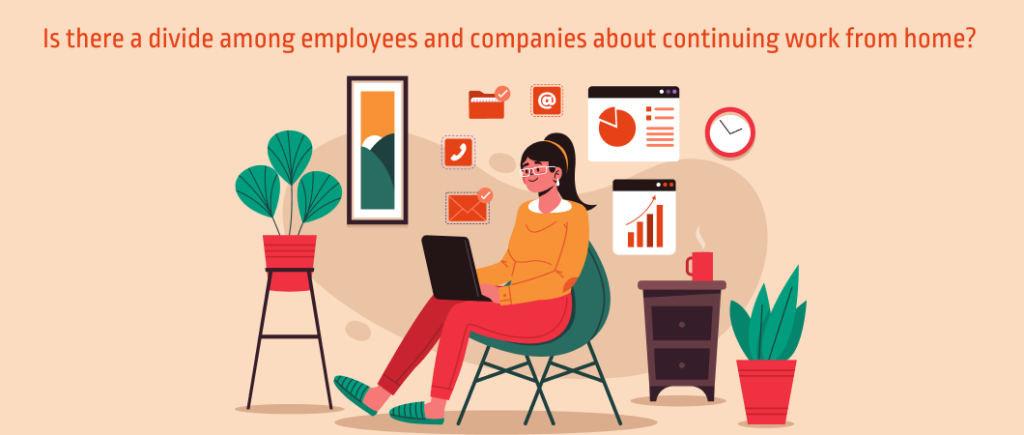Last updated on January 11th, 2024
“I know that returning to the office represents a long-awaited milestone and a positive sign that we can engage more fully with the colleagues who play such an important role in our lives,” wrote Tim Cook in a recent email to all the Apple employees.
His sentiments echo those of many decision-makers worldwide who, after a taxing period of uncertainty, would like to re-establish some “order” (at least how we perceived it until 2020).
Microsoft’s 2022 survey of 31,000 people across 31 countries reveals that 50% of leaders are willing (and pushing) to switch to full-time in-house engagements for five days a week. The same, however, cannot be said of most employees who now value their flexible time more than ever.
Nevertheless, the prevailing trend of back-to-office seems to be catching on. Google’s initiative of modifying the office design, reimbursing for commute, and Microsoft’s experimentation with lawn games are just a few examples of how employers are trying to meet their employees on a more natural, relaxed, and productive level.
But why such inclination? Why would companies bother to re-invent their working environment? More importantly, what’s not working with remote arrangements that’s prompting them to go back to the “real” office?
Let’s try and answer these questions for starters.
An Established Sense of Prospering
For decades, the workplace has been a major source of fulfillment for many. Office spaces are melting pots of diversity, community, and innovation. It’s a place where young talent meets experienced professionals. It’s often an environment that elevates the best in us and allows us to learn from each other.
If a company is successful, it’s because its office environment plays a massive role in its growth and prosperity. And this particularly rings true in the minds of executives. They have this innate attachment to the familiar, and they cling to that which has worked well for decades.
For instance, at a Wall Street Journal conference, JP Morgan’s CEO Jamie Dimon claimed that remote work “doesn’t work for those who want to hustle” and doesn’t complement the concept of “spontaneous idea generation.”
These views are tied to the idea of a flourishing, experimenting, and risk-taking culture. And there’s no denying that a remote work setup could, at some points, inhibit the intensity of interaction.
At the same time, though, there’s an equal probability that remote (or perhaps hybrid) arrangements could yield more creative ideas and optimal communication – in a different way altogether. For instance, Slack’s senior vice president Brian Elliot argues that data favors hybrid work settings, for it adds to the sense of being in control and increases productivity.
The Notion of Institutional Knowledge
In his essay for Harvard Business Review, University of Texas professor Art Markman writes that “it’s harder for institutional knowledge to make its way around in a remote environment”.
The notion of knowledge that Markman alludes to is something we have been accustomed to for a long time. The knowledge that we’ve established, accrued, and refined within the organization allows us to function in a coordinated manner. This is often knowledge gained through observing others or through osmosis when we react to situations together. Best practices and work-around emerge and evolve in such conditions.
In the context of modern-day market dynamism, such coordination is imperative to success. Well-thought-out and planned strategies, like a repeatable process, help to set up predictable outcomes. And a sense of predictability is hugely beneficial for the organization.
Such practices, models, techniques, and workflows are easier to bring to fruition in a centralized (or rather structured) environment with quite a number of brains at work. And that’s something that virtual arrangement doesn’t necessarily favor, even with the best technological assets in place.
This institutional knowledge also points to the fact that executives need to prioritize the organization’s benefit on the whole. And this means going back to the office to ensure that everyone is on the same page.
What’s the Challenge?
In two words – employees’ habits. While organizations and managers obviously wish for a return to the same work routine, employees are still keen (and doing so) to work flexibly and remotely.
A study by Pew Research Center reveals that 59% of the US workforce enjoys the ability to work remotely and wants to do so in the future. The sentiment is quite the same when narrowing the analysis to millennials and Gen Z workers, with 51% saying they would prefer to work from home permanently.
Why such affinity for flexible arrangements?
Mental Well-being: People who work from home experience a sense of fulfillment that’s hard to match. They feel happier, more accomplished, and also more productive.
Commute Time & Cost: The amount of time spent on commutes is prohibitively high and often hinders an employee’s performance at work. Talk about congestion, traffic jams, and parking fees.
Work-life Balance: Perhaps the most important one – the inability to balance work and personal lives is a major inhibitor in an in-office setting. While working from home has its own downsides, it’s far easier to achieve a work-life balance.
Evidently, it’s hard to beat the convenience and flexibility of working in a virtual environment. And so, organizations are re-channeling to the tried and tested office design with a hint of modernity for a win-win situation. In other words, the “hybrid workplace” is on the rise.
We’re pretty confident that this trend will get refined in the years to come and the middle-ground will be found, tested, improved, and proven.
Have you noticed any changes in your organization’s setup? How has it ended up looking?



